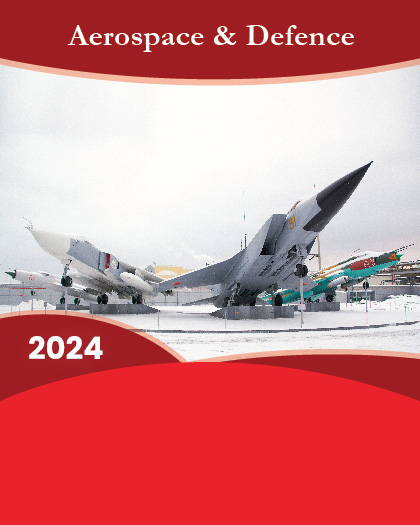
Global Nano and Microsatellite Market is valued at approximately USD 2.4 billion in 2022 and is anticipated to grow with a healthy growth rate of more than 10.85% during the forecast period 2023-2030. Microsatellites and nanosatellites represent compact artificial satellites launched into space for diverse objectives, such as data collection about earth and outer space. These satellites are classified based on their total mass, as outlined by the National Aeronautics and Space Administration (NASA). Nanosatellites are defined as artificial satellites weighing between 1 kg and 10 kg, whereas microsatellites fall within the weight range of 11 kg to 100 kg. Furthermore, nanosatellites adhering to standard dimensions denoted as "U" or Units, measuring 10 ? 10 ? 10, are commonly called CubeSats. The market growth is driven by key factors such as increasing usage of nanosatellites for telecommunication services and lower Manufacturing Cost and Time Compared to Large Satellites.
Growing trend of utilizing nanosatellites, which are small and lightweight satellites, to provide telecommunication services. Nanosatellites, also known as CubeSats, are miniature satellites that have gained popularity due to their relatively low cost and quick development cycles compared to traditional larger satellites. As per Statista, the growth of nanosatellite in telecommunication was valued at USD 14.1 billion in 2016 and is expected to reach USD 95.3 billion in 2021. Furthermore, between 2017 and 2022, among the 57 satellites sent into Medium Earth Orbit (MEO), eight were specifically crafted for communication objectives. Similarly, within the 147 satellites positioned in the Geostationary Earth Orbit (GEO), a significant majority of 105 were designated for communication purposes. Across the globe, various organizations owned and launched approximately 4,131 Low Earth Orbit (LEO) satellites over this period, with almost 2,976 of them expressly designed to facilitate communication. Furthermore, The UK government has outlined a substantial USD 7.5 billion plan to enhance the satellite telecommunication capabilities of its armed forces. In July 2020, the UK Ministry of Defence (MoD) granted a contract valued at USD 630 million to Airbus Defence and Space for the construction of a new telecommunications satellite, aiming to fortify military capabilities temporarily. Furthermore, in November 2022, the European Space Agency (ESA) proposed a 25% increase in space funding over the next three years. This initiative is geared towards sustaining Europe's leadership in Earth observation, expanding navigation services, and maintaining collaboration with the United States in exploration. ESA has sought the support of its 22 member nations to endorse a budget of approximately USD 20.40 billion for the period spanning 2023-2025. However, limitations of small satellites regarding payload accommodation and stringent government regulations stifle market growth throughout the forecast period of 2023-2030.
The key regions considered for the Global Nano and Microsatellite Market study includes Asia Pacific, North America, Europe, Latin America, and Middle East & Africa. In 2022 North America emerged as the leading market for nanosatellites and microsatellites, primarily propelled by escalating investments in space-related initiatives. Conversely, the Asia Pacific region is poised to become the fastest-growing market, with countries such as Japan and India spearheading the aggressive deployment of small satellites dedicated to communication and navigation functions. Japan strategically positioned itself to address the rising demand for compact satellites and spacecraft, aligning with the imperative for miniaturization in the industry.
Major market player included in this report are:
Vector Launch, Inc
Dauria Aerospace
Surrey Satellite Technology Limited (SSTL)
GomSpace
Innovative Solutions in Space (ISIS) B.V.
Sierra Nevada Corporation (SNC)
Spire Global, Inc.
SpaceQuest Ltd.
The Boeing Company
Tyvak Nano-Satellite Systems, Inc
Recent Developments in the Market:
In March 2021, Rocket Lab USA, a publicly traded American aerospace manufacturer and provider of small satellite launch services, successfully deployed seven small satellites into Earth's orbit, including its spacecraft designed for future missions. Among the payloads were an Earth-observation microsatellite and two nanosatellites dedicated to the "Internet of Things.
In March 2022, the China Aerospace Science and Technology Corporation achieved a successful launch of the Tiankun-2 satellites into a low-Earth polar orbit, marking the inaugural flight of the Long March 6A.
Global Nano and Microsatellite Market Report Scope:
Historical Data - 2020 - 2021
Base Year for Estimation - 2022
Forecast period - 2023-2030
Report Coverage - Revenue forecast, Company Ranking, Competitive Landscape, Growth factors, and Trends
Segments Covered - Application, Orbit Class, End-user, Propulsion Tech, Region
Regional Scope - North America; Europe; Asia Pacific; Latin America; Middle East & Africa
Customization Scope - Free report customization (equivalent up to 8 analyst's working hours) with purchase. Addition or alteration to country, regional & segment scope*
The objective of the study is to define market sizes of different segments & countries in recent years and to forecast the values to the coming years. The report is designed to incorporate both qualitative and quantitative aspects of the industry within countries involved in the study.
The report also caters detailed information about the crucial aspects such as driving factors & challenges which will define the future growth of the market. Additionally, it also incorporates potential opportunities in micro markets for stakeholders to invest along with the detailed analysis of competitive landscape and product offerings of key players. The detailed segments and sub-segment of the market are explained below:
By Application:
Communication
Earth Observation
Navigation
Space Observation
Others
By Orbit Class:
GEO
LEO
MEO
By End-user:
Commercial
Military & Government
Other
By Propulsion Tech:
Electric
Gas based
Liquid Fuel
By Region:
North America
U.S.
Canada
Europe
UK
Germany
France
Spain
Italy
ROE
Asia Pacific
China
India
Japan
Australia
South Korea
RoAPAC
Latin America
Brazil
Mexico
Middle East & Africa
Saudi Arabia
South Africa
Rest of Middle East & Africa
























